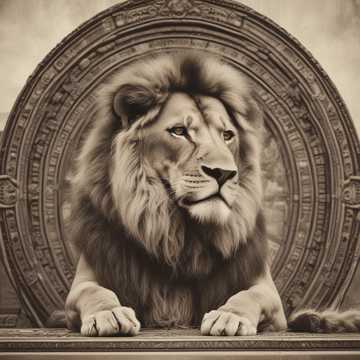Free Ethiopian anthem Music Generator Powered by AI
Turn text into high-quality Ethiopian anthem music effortlessly – no login required!
music.toolTips

Teddy Afro's "Dagmawi Minilik"
A patriotic anthem celebrating Ethiopian history, honor, and the legacy of Emperor Menelik II, with powerful vocals and an epic choir performance, invoking national pride and unity.
02:55
Invalid date

Teddy Afro, Minilik
A stirring Ethiopian anthem celebrating the legacy of Emperor Menelik II, invoking patriotism and national pride through powerful vocals, traditional instruments, and a male choir. The song portrays Ethiopia's fight for independence and the honor of its people.
03:04
5 days ago

Teddy Afro, Minilik
A powerful Amharic anthem celebrating Ethiopia's history and freedom, honoring Emperor Menelik II's legacy with rich instrumentation and a passionate choir.
04:00
5 days ago

Teddy Afro, Minilik
A stirring patriotic anthem in Amharic, celebrating Ethiopia's freedom, unity, and the legacy of Emperor Menelik II. Featuring traditional instruments and an epic male choir, it draws inspiration from Teddy Afro's iconic style, evoking national pride and strength.
03:37
6 days ago
Sub-tags and Classifications of Ethiopian Anthem Music
Traditional Ethiopian Anthem Music
Traditional Ethiopian anthem music refers to the styles and instruments used in earlier forms of national anthems, which were influenced by Ethiopia's diverse ethnic groups. These anthems were often performed with instruments such as the krar (a type of lyre) and the masinko (a one-stringed bowed instrument). The melodies were simpler and based on Ethiopian pentatonicEthiopian anthem content scales, often reflecting the cultural heritage of various regions.
Modern Ethiopian Anthem Music
Modern Ethiopian anthem music incorporates orchestral and symphonic elements, reflecting the country’s contemporary identity. The fusion of classical Western instruments with traditional Ethiopian sounds is a hallmark of the current anthem. This classification also includes the use of choral arrangements, giving the anthem a grand, unified feel, symbolizing the collective spirit of the Ethiopian people in a global context.
Ethiopian Anthem Lyrics and Themes
The lyrics of the Ethiopian anthem are a vital aspect of its cultural and emotional impact. Written in Amharic, the anthem's themes focus on unity, freedom, and national pride. The anthem conveys Ethiopia’s long-standing resistance to colonization and its desire for peace, unity, and national strength. The lyrics emphasize the country's rich history, the sacrifices made for sovereignty, and the commitment to a prosperous future.
Famous Artists and Works Related to Ethiopian Anthem Music
Solomon Lulu
Solomon Lulu is the composer of the current Ethiopian anthem, which was adopted in 1992. His work blends traditional Ethiopian musical elements with modern orchestral arrangements, creating a sense of unity and national pride. His contribution to Ethiopian national music is pivotal, as he crafted an anthem that represents the diverse culture and resilience of the Ethiopian people.
Ethiopian National Anthem (1992)
The Ethiopian National Anthem, composed by Solomon Lulu, is a blend of traditional Ethiopian melodies with modern orchestral arrangements. Its arrangement features grand choral and instrumental sections that evoke a sense of national pride and collective strength. The anthem’s innovative use of harmonies and dynamics makes it a unique representation of Ethiopian culture and history, resonating with people across generations.
Fikru Tsegaye
Fikru Tsegaye, a renowned Ethiopian composer and musician, is known for his orchestral and choral works that often explore themes of patriotism and national identity. His contribution to Ethiopian music includes arrangements that have been influential in shaping the modern sound of the national anthem, blending Ethiopian folk traditions with Western classical music.
Yene Fikir
Although not the anthem itself, 'Yene Fikir' by Tilahun Gessesse became a national symbol of Ethiopian pride and unity. The song's powerful lyrics, combined with Tilahun's soulful delivery, have made it an iconic representation of the Ethiopian spirit. The orchestral backing and traditional Ethiopian instrumentation make it a lasting piece that complements the themes of the national anthem.
Tilahun Gessesse
Tilahun Gessesse was one of Ethiopia's most influential singers and composers, and though he is not directly linked to the anthem, his music has inspired many Ethiopian anthems and patriotic songs. His legacy in Ethiopian music includes powerful vocal performances that have become synonymous with national pride and unity.
Application Scenarios for Ethiopian Anthem Music
The Ethiopian anthem is prominently used in national events and ceremonies, such as Independence Day celebrations, government inaugurations, and international sporting events. The anthem is played to honor the nation’s history and symbolize national unity, fostering a sense of pride and patriotism among citizens and attendees.
National Events and Ceremonies
The anthem is sometimes featured in Ethiopian documentaries or historical films that focus on the country's struggle for independence and its cultural heritage. The powerful themes of the anthem help to underscore the narrative of resilience, pride, and national identity, making it a compelling addition to visual storytelling.
Documentaries and Films
At international diplomatic events, the Ethiopian anthem is played to signify the country’s sovereignty and cultural identity. It is used during official visits, conferences, and state banquets, where national anthems are a formal part of international protocol.
Diplomatic Occasions
The Ethiopian anthem is often included in cultural and educational programs that aim to educate people about Ethiopia’s history, culture, and values. It is used to inspire a sense of pride in Ethiopian heritage and to teach younger generations about the importance of national unity and patriotism.
Cultural and Educational Programs